Planting and caring for potatoes under straw

Growing potatoes under a thick layer of straw is a technique that significantly reduces the labor costs of the summer resident. This method greatly simplifies the care of the growing crop and the subsequent harvest of the fruit. He is especially liked by older people, although he will certainly be of interest to younger gardeners.

Advantages and disadvantages
The technique of cultivating potatoes on straw or hay is based on the beneficial effect of mulch on the substrate. It is based on processes that take place in the wild and are balanced for the soil. As a result, an improvement in fruiting is achieved without deteriorating the taste and quality of the fruit.
When using unconventional fertilizers, this is not easy to achieve, since the application of nitrogen, on the one hand, increases the amount of the crop, but at the same time causes the accumulation of nitrates in the fruits. It is not safe to use such potatoes for food.
The use of straw ensures high fertility without changing the concentration of nitrates.
Straw and hay are based on valuable carbohydrates - cellulose and lignin. In a humid environment, they provide a food base for humus-forming bacteria. An increase in their amount in the ground causes the transformation of straw into humus. As a result, the volume of humic substances in the soil is restored, all the microelements spent on growing garden crops are replenished, and the structure of the soil is generally optimized.
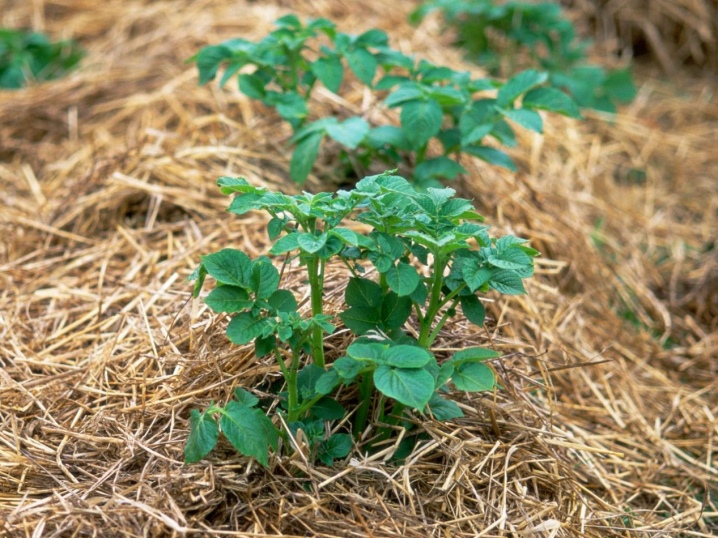
This method is most often used for small areas. The benefits of this technique include a number of factors.
- Creation of natural protection of potato fruits from all kinds of pests. Straw repels most pests, so summer residents will not need to purchase special preparations, including fungicides.
- Protection of young tubers from cold weather. The mulch cover creates a durable layer on the surface of the earth, which protects the plants from recurrent frost. This is especially true when planting potatoes early.
- Heat protection. Straw helps not only in cold but also in hot weather. On hot days, it will work as mulch and prevent moisture loss.
- Minimizing the risk of damage to the integrity of the tubers. The potatoes have to be picked by hand, so the tubers are intact. This will significantly reduce the likelihood of fungal diseases affecting the fruit.
- Saving energy. This method of planting and growing a plant does not require digging the site before planting, preparing sowing holes, hilling and subsequent fertilization. Harvesting will not be a hassle - it can be done easily and simply without using a shovel.
- As the hay decays, it leaves the substrate clean and loose.
Gardeners noticed that the technique of growing potatoes on mulch allows very good results. On average, one bucket of seed grows up to 8-12 buckets of strong healthy tubers.

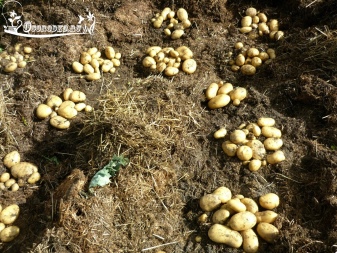
However, it was not without its drawbacks.
- The distribution of rats, mice and other rodents, hay for them is the main breeding ground. They are attracted by fragments of cereal spikelets. If there are too many of them, then they can spoil a significant proportion of the crop.
- A peculiar aftertaste. Some summer residents believe that the taste of potatoes grown under a layer of straw is different from that of vegetables grown in the ground.
- The cost of purchasing a covering material. To cultivate potatoes, you need to prepare a lot of hay or straw. If the mulch layer is too thin, this leads to greening of the tubers, such vegetables can cause cancer.
- Hay and straw attracts slugs, which can also significantly spoil fruiting.
In general, this option for growing potatoes has many pros and cons. Therefore, before introducing it in your country house, try to experiment on small beds for testing. Moreover, for planting, you can pick up the lowest-quality tubers, which you do not mind throwing out if the experiment is unsuccessful.

Timing
In the central part of Russia, straw potatoes can be planted in the second half of May, after the threat of return frosts has finally passed. By this time, the earth is already warming up. If you plant earlier, the tubers will germinate for too long in a cold substrate.
The optimal conditions are those under which the soil temperature is at least +15 degrees. It should be borne in mind that the sprouts will have to wait a little longer than usual, as they need to fight their way through the thick layer of hay. However, once at the top, they will very soon catch up with those that grew from potatoes planted in the traditional way.
In the southern regions, potatoes can be planted in the first half of May, in the northern regions it is better to postpone work until late spring - early summer.
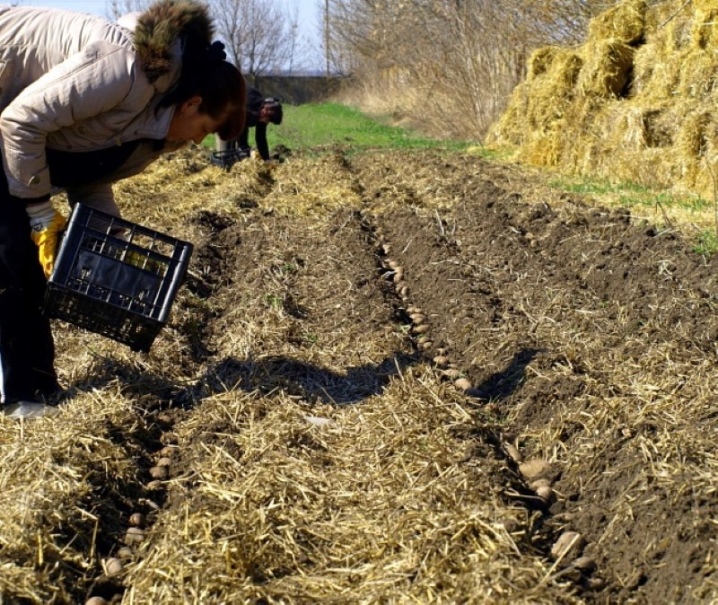
Soil preparation
The preparation of the turf before sowing the tubers plays an important role. Depending on the season, they perform different types of work.
Autumn
If you are going to plant potatoes in the same area where they grew earlier, immediately after harvesting the fruits, you need to plant siderates. For this, mustard, oil radish, legumes, cereals are suitable. You can plant any one plant, but it will be more effective to use all at once, they are evenly mixed over the entire sown area.
When the green mass goes into active growth, it must be dug up and then covered with mulch (peat, compost or partially rotted straw). To improve the quality of the substrate, then nutrients must be added to the ground.
- Humus - it is advisable to use stale material that has lain for a couple of years.
- Ground citrus peel - this component gives off a pungent odor, it scares away rodents.
- Crushed eggshell - performs disinfecting functions, disinfects the soil well.
- Wood ash - such a top dressing saturates the earth with potassium. And besides, it creates protection from the wireworm.
Fertilizers are evenly scattered over the entire ground after digging, and loosened with a rake.
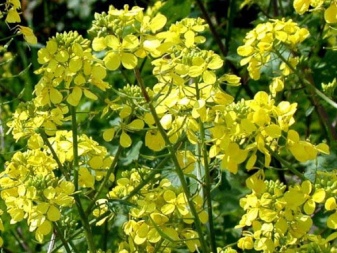

Spring
Spring preparation of the land involves digging trenches and placing straw and compost in them. In cold climatic zones, preheating of the soil will be required, this measure will allow the potatoes to be planted a couple of weeks earlier. For this purpose, a track with a depth of 70-110 cm is created in the ground, covered with mulch and well tamped so as to form a pillow 50 cm high.Under the weight of a person of average build, it should crumple by no more than 1-3 cm.
You can increase the layer of the pillow up to 1 m - this will significantly increase the effectiveness of warming up. At the same time, it is not recommended to make it less than 40 cm, otherwise it will not be able to fully warm up the soil.
A layer of warming material is irrigated with water with Epin or Baikal growth stimulants diluted in it. If desired, you can add urea or yeast. Immediately after that, the warming material is covered with a layer of soil 30-50 cm thick, and after a couple of days potatoes are planted.
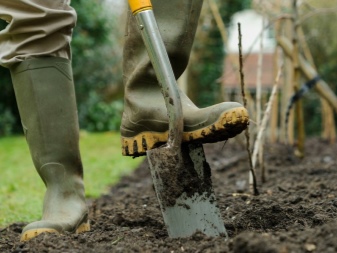
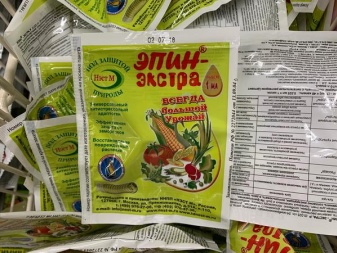
How to prepare the material?
Before you start cultivating potatoes under hay or straw, you need to prepare the seedlings. This should be done in stages, starting 3-4 weeks before planting. During this period, the tubers are taken out of the basement, carefully sorted, all spoiled, too small, and also with traces of rot and disease are removed. All the rest are moved to a warm place with heating up to 18-25 degrees.
Seedlings are treated with a pale solution of potassium permanganate or Bordeaux liquid for disinfection. After that, the tubers are laid out in one row in a plastic container lined with paper so that the tubers do not sprout into the drainage holes. The workpieces are covered with moistened sawdust and left to germinate.
On the day of planting, potatoes are treated against pests by means of "Turbo" or "Prestige".
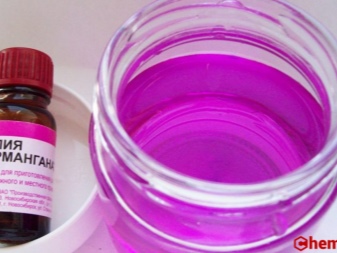

Presowing germination is very important, since it allows you to get ripe fruits a couple of weeks earlier than when using non-germinated tubers.
The following potato varieties proved to be the most effective in this technique:
- Artemis;
- "Nevsky";
- "Sappho";
- "Symphony";
- "Solar".
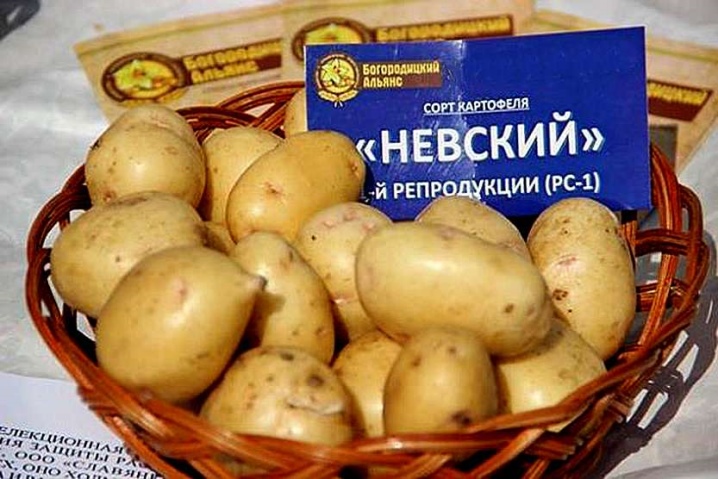
No less attention should be paid to the preparation of mulch. This method allows the use of cut and dried grass, last year's hay, as well as partially rotted straw, which was used to grow vegetables last year. For each hundred square meters of sown area, about 20-30 m2 of straw is needed.
Many gardeners doubt which material is better - hay or straw. Hay is a dry grass, it can contain weeds and their seeds. In a damp environment, they germinate very soon and heavily clog the soil. However, in the process of decay, hay saturates the earth with nutritious micro and macro elements. In addition, it reliably protects fruits from ultraviolet radiation.
Straw is the stem of cereal plants. Weeds are absent in it, but at the same time there are no useful substances in it. Therefore, when overheated, it does not give the soil any useful minerals.
When selecting a material, the characteristics of the soil are most often taken into account. Straw has the property of acidifying it, therefore it is used for neutral and alkaline substrates. In all other cases, the use of hay will be more effective.
In general, any type of covering material has its pros and cons, so the choice is largely an individual decision of each gardener.
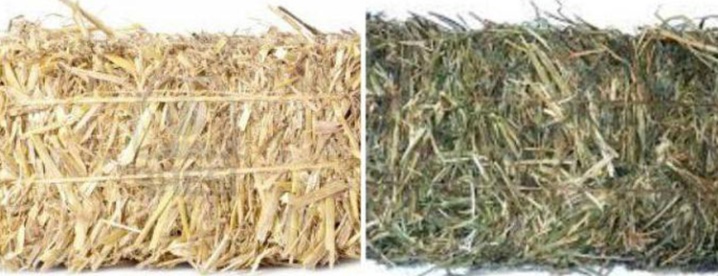
Landing technology
They start planting potatoes for hay after the soil warms up to +10 degrees. The material should be planted in areas well-lit by the sun. Planting technology includes simple steps.
- First, shallow grooves are formed in the ground, if the ground is dry, you can pour some water into them, the substrate must be moistened.
- Fertilizers from humus and crushed ash are applied to the formed furrows.
- Prepared tubers are placed on the resulting nutrient mixture so as to orient them by seedlings upward. The tubers are planted with a step of 30 cm, the size of the row spacing is 70 cm.
- After that, the potatoes are covered with hay or straw with a layer of 50-55 cm. It is not necessary to make the mulching layer thicker, since this will greatly complicate germination.
If the weather is damp, you will need to gently whisk the mulch from time to time to prevent rotting from moisture. On hot days, on the other hand, the beds need to be watered frequently.
If the planting is done correctly, then comfortable conditions will be created for the potatoes. Weeds will not be able to break through the mulch layer, while evaporation will be completely excluded - due to this, potato tubers grow and develop in the most comfortable conditions.

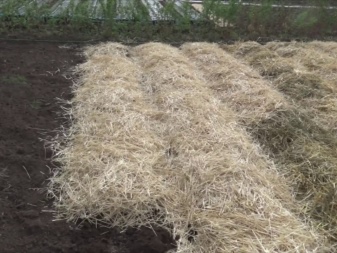
Other methods of growing under straw
The scheme for planting potatoes for mulch is by no means the only one. There are alternatives to this technique.
- Using soil. On the planting site, grooves are marked, and holes are made 5-7 cm deep so that the distance between them is about 25 cm. Seed tubers are placed in each and sprinkled with a substrate, hay is laid on top with a layer of 20-25 cm.The main difference between this technique in comparison with the traditional one is the use of a substrate that will sprinkle the seed.
- In a bucket. In order to save the planting area, you can grow potatoes under mulch in a bucket. To do this, drainage is poured into the container, then a layer of soil 5-8 cm thick, the same amount of humus and laid on a couple of tubers on top. Then hay is poured in a layer of 10-12 cm, and mulch is added in the course of growth. Such an impromptu bed must be watered from time to time.
- With cardboard. For this method, you will need thick cardboard, packaging from household appliances, and hay will do. The cardboard is laid overlapping on the bed so as to completely exclude gaps on the sides and fixed with bricks at the edges. On the cardboard, cuts are made in the form of the letter "X", potatoes should be placed in the center, while their sprouts must necessarily look up. The cardboard is covered with mulch with a layer of 20 cm, as the sprouts appear, add the mulch.
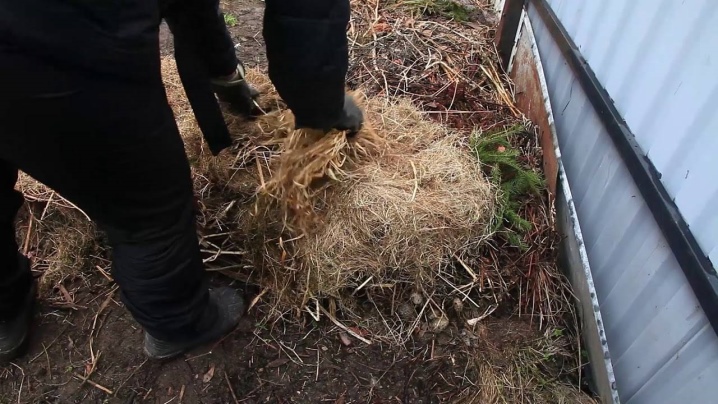
Follow-up care
Caring for potatoes under hay or straw comes down to maintaining a suitable level of moisture in the soil and the bottom layer of the shelter. In areas with a humid climate or in rainy weather, watering the potatoes is not necessary, but care must be taken that the mulch does not rot. In areas where the summer is dry and hot, on the contrary, watering should be done more often, otherwise the potatoes will dry out. In general, in the middle part of Russia, in order to obtain large-sized tubers, irrigation is carried out every 4 days; for growing medium-sized potatoes, once a week is enough.
There is no need for loosening and weeding, since weeds do not grow on straw. And if single copies grow, then you can quickly and simply pull them out with your hands along with the roots.
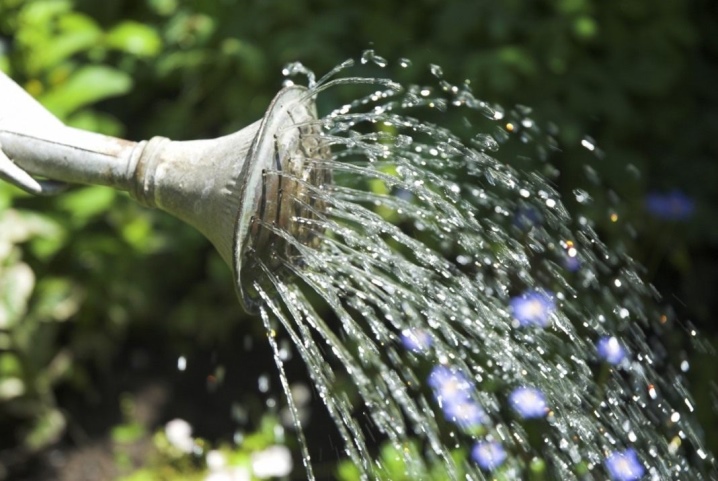
The main problem of the summer resident is the fight against garden pests.
- The main enemy of the potato crop is slugs.for which dry straw cover provides a comfortable shelter from hot weather. This neighborhood is extremely unsafe for tubers, since slugs damage young fruits and create an environment for the development of fungal infections. You can fight them using lime, onion peels, sawdust, crushed egg shells. From time to time it is necessary to inspect the bushes and mulch, removing all the hidden parasites by hand.
- No less dangerous for potatoes and rodentswho like the ears of wheat, which are often found in hay. You can fight them using spicy herbs, they are planted around the entire perimeter of the potato garden. Marigolds and basil are especially effective against rats and mice. You can scare away uninvited guests by creating vibration interference. To do this, metal rods are stuck along the entire perimeter with a step of 1 m, plastic containers are hung on them. Under the influence of the wind, such a structure will create noise; in these conditions, the metal rods vibrate and transmit the vibration downward.
- To protect potatoes from the Colorado potato beetle before planting, it is advisable to treat the seedlings with insecticides, such as "Matador" or "Prestige".
But it is not recommended to place poisonous baits from rodents around the perimeter of the garden plot - this can harm the rest of the inhabitants of the ecosystem (birds, insects and hedgehogs), which do not pose any threat to fruiting.
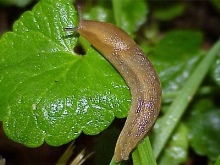
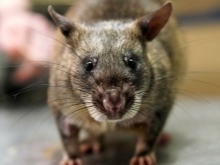
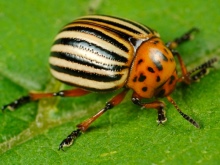
Harvesting
Tubers grown under mulching are best harvested in clear, warm weather. This is easy to do.
- First you need to remove the mulch layer with a rake. You shouldn't throw out the straw as it can be used next season.
- After that, they collect the tubers with their hands, they are located shallowly, and they are placed in bags or buckets.
- If planting and care is done correctly, you can get the first crop already 3 months after planting.
In general, growing potatoes under straw is much easier than using the classic method. This technique does not require soil processing, laborious digging of tubers and active feeding.In addition, if desired, you can resort to combined techniques - straw and soil, hay and cardboard.
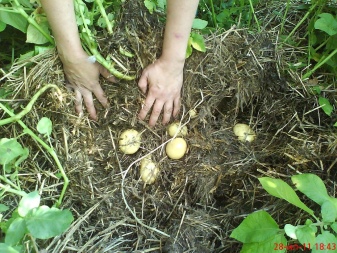
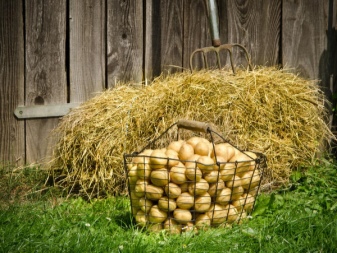













The comment was sent successfully.